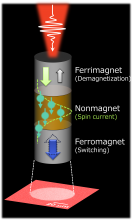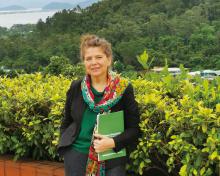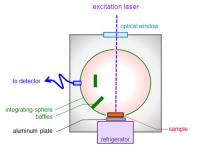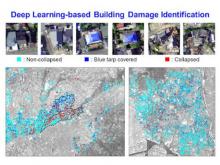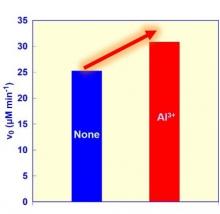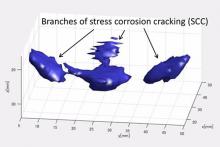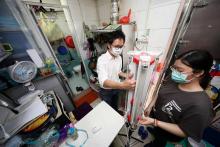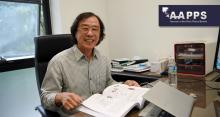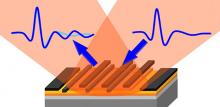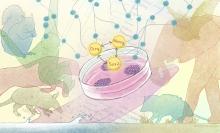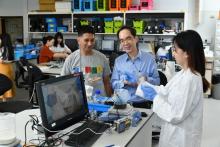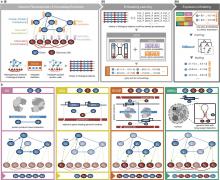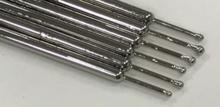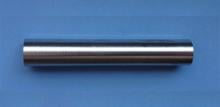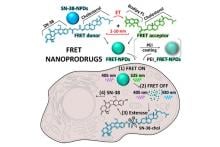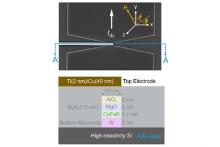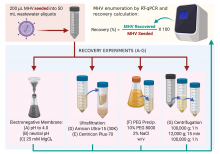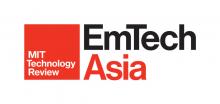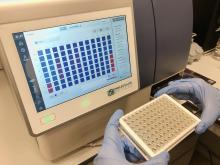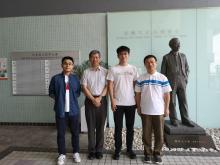Engineering & Technology
News
13 Oct 2020
The trick to extremely thin supercapacitors with improved performance is spraying graphene ink at an angle.
12 Oct 2020
Governments around the world are taking steps to slow the pace of global warming. In the report titled "Hong Kong’s Climate Action Plan 2030+", a 70 per cent reduction in carbon intensity by the year 2030 was set. Achieving this ambitious target will require a major change in behaviour at both the corporate and individual levels.

07 Oct 2020
An anticipated 100+ expert speakers from around the world will convene to discuss next-generation identity solutions and their capability to both transform society and counter identity-based fraud.
06 Oct 2020
Tohoku University researchers have improved a method for probing semiconducting crystals with light to detect defects and impurities. The details of their 'omnidirectional photoluminescence (ODPL) spectroscopy' set-up were published in the journal Applied Physics Express, and could help improve the fabrication of materials for electric cars and solar cells.
01 Oct 2020
Researchers trained an AI to assess post-disaster building damage just by looking at aerial images of the aftermath.
29 Sep 2020
Researchers at Osaka City University produce malic acid, which contains 4 carbon atoms, through artificial photosynthesis by simply adding metal ions like aluminum and iron. This solves a problem with current artificial photosynthesis technology of only producing molecules with 1 carbon atom and paves the way to exploring the use of CO2 as a raw material.
25 Sep 2020
A two-in-one technology provides 3D images of structural defects, such as those that can develop in aircraft and power plants.
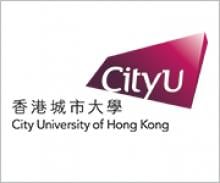
24 Sep 2020
While the power conversion efficiency of perovskite solar cells (PVSCs) – a future of solar cells – has already greatly improved in the past decade, the problems of instability and potential environmental impact are yet to be overcome. Recently, scientists from City University of Hong Kong (CityU) have developed a novel method which can simultaneously tackle the leakage of lead from PVSCs and the stability issue without compromising efficiency, paving the way for real-life application of perovskite photovoltaic technology.

24 Sep 2020
Because of their unique physical, chemical, electrical and optical properties, two-dimensional (2D) materials have attracted tremendous attention in the past decades. After revealing the realistic strength and stretchability of graphene, nicknamed “black gold”, researchers from City University of Hong Kong (CityU) have carried forward the success by unveiling the high defect tolerance and elasticity of hexagonal boron nitride (h-BN), another 2D material known as “white graphene”. This follow-up study will promote future development and applications of strain engineering, piezoelectronics and flexible electronics.
22 Sep 2020
The COVID-19 outbreak is causing widespread disruption to daily life. Hong Kong people living in cramped subdivided flats with poor hygiene conditions have been particularly hard hit. In light of this alarming situation, Lingnan University (LU) jointly launched “Project Ultra Violite” with NGOs to provide a free, efficient UV disinfection service for 1,000 subdivided flats. It is the territory’s first community-wide programme using UV disinfection technology.
16 Sep 2020
Professor Hyeon K. Park, affiliated with South Korea's Ulsan National Institute of Science and Technology (UNIST) has been selected, as the 7th Laureate of S. Chandrasekhar Prize of Plasma Physics.

11 Sep 2020
Face masks have become an important tool in fighting against the COVID-19 pandemic. However, improper use or disposal of masks may lead to "secondary transmission". A research team from City University of Hong Kong (CityU) has successfully produced graphene masks with an anti-bacterial efficiency of 80%, which can be enhanced to almost 100% with exposure to sunlight for around 10 minutes. Initial tests also showed very promising results in the deactivation of two species of coronaviruses. The graphene masks are easily produced at low cost, and can help to resolve the problems of sourcing raw materials and disposing of non-biodegradable masks.
08 Sep 2020
Tohoku University Professor Taiichi Otsuji has led a team of international researchers in successfully demonstrating a room-temperature coherent amplification of terahertz (THz) radiation in graphene, electrically driven by a dry cell battery.
07 Sep 2020
Scientists are learning about species adaptation by comparing their stem cell-related genes.
01 Sep 2020
It seems that nothing is impossible in this era of smart technology. Even scientific experiments can be conducted via smartphone, thanks to Professor Yeung Yau-yuen, Adjunct Professor at the Department of Science and Environmental Studies of The Education University of Hong Kong (EdUHK), and his team’s ‘Remote Laboratory’.
31 Aug 2020
A research team from the Department of Computer Science and Engineering (CSE) at The Chinese University of Hong Kong (CUHK) has developed a new Gene Expression Embedding frameworK (GEEK), which uses artificial intelligence technologies in machine learning and natural language processing to study the regulation of gene expression. In contrast to previous works that focused on one or a few regulatory mechanisms at a time, this new framework can study the joint effects of many mechanisms simultaneously. A research article describing this new study has been published in the renowned international science journal Nature Machine Intelligence. The framework may help study the causes of cancers and treatment methods.
27 Aug 2020
A team at Tohoku University have perfected a new heat treatment technique with rapid heating and asymmetrical cooling processes in metallic glass. This technique enabled the team to induce a gradient of local glassy structure, bringing an apparent work hardening behavior.
20 Aug 2020
Researchers from Tohoku University’s Graduate School of Engineering have discovered a novel iron-based superelastic alloy capable of withstanding extreme temperatures—both high and low.
18 Aug 2020
Nanoprodrugs have immense potential for cancer treatment, more so than conventional drug delivery systems. Researchers have, for the first time, developed a comprehensive study on the dynamics of the SN-38 nanoprodrug.
17 Aug 2020
The human brain efficiently executes highly sophisticated tasks, such as image and speech recognition, with an exceptionally lower energy budget than today's computers can. The development of energy-efficient and tunable artificial neurons capable of emulating brain-inspired processes has, therefore, been a major research goal for decades.
12 Aug 2020
A group of researchers have demonstrated that, from seven methods commonly used to test for viruses in untreated wastewater, an adsorption-extraction technique can most efficiently detect SARS-CoV-2. This gives us another tool to detect the presence and spread of the COVID-19 pandemic
12 Aug 2020
Forty-five of the world’s most influential leaders and innovators participated in EmTech Asia. They discussed how emerging technologies will influence industries related to artificial intelligence, robotics, sustainability, healthcare, immersive media, and more.
10 Aug 2020
The Faculty of Education and Human Development at The Education University of Hong Kong (EdUHK) launched its new Bioanalytical Laboratory for Educational Sciences (BLESS) with paid services in July 2020. This is the first bioanalytical lab to focus on education research in Hong Kong.
05 Aug 2020
Research at Kanazawa University as reported in Scientific Reports demonstrates atomic force microscopy imaging that gets around the challenges of exciting very small cantilevers at their high megahertz resonance frequencies. The approach accomadates wide frequency bandwiths, and is applicable for photosensitive materials in a wide range of liquids.
04 Aug 2020
A research team from The Chinese University of Hong Kong (CUHK) and the University of Warwick has reached a crucial milestone towards developing single-pixel terahertz radiation (T-ray) imaging technology. Their single-pixel T-ray camera reached 100 times faster acquisition than the previous state-of-the-art without adding any significant costs to the entire system or sacrificing the sub-picosecond temporal resolution needed for the most sought-after applications, potentially opening the opportunity for them to be used in non-invasive security and medical screening. The breakthrough has been published in the journal Nature Communications.
04 Aug 2020
The ever-increasing growth in data traffic requires more powerful transmission networks. To respond to such demand, a group of researchers led by Prof. Xiankai Sun and Prof. Hon Ki Tsang in the Department of Electronic Engineering, The Chinese University of Hong Kong (CUHK) has recently revealed a way to use light to convey large rates of data in advanced optical chips. Their findings and demonstrations shed new light on increasing the data capacity with low insertion loss and crosstalk. These research results have been recently published in the prestigious scientific journal Nature Communications.
31 Jul 2020
An artificial intelligence approach extracts how an aluminum alloy’s contents and manufacturing process are related to specific mechanical properties.
30 Jul 2020
Researchers have solved a major problem for optical wireless communications - the process by which light carries information between cell phones and other devices. Light-emitting diodes (LEDs) pulse their light in a coded message that recipient devices can understand.
Events
Sorry, nothing coming up for this discipline
- « first
- ‹ previous
- 1
- 2
- 3
- 4
Giants in history
Sorry, nothing coming up for this discipline


